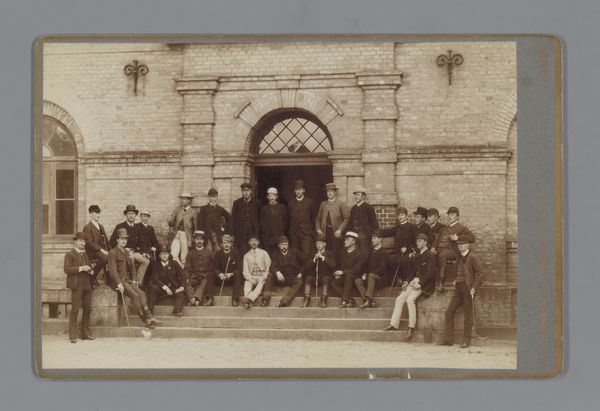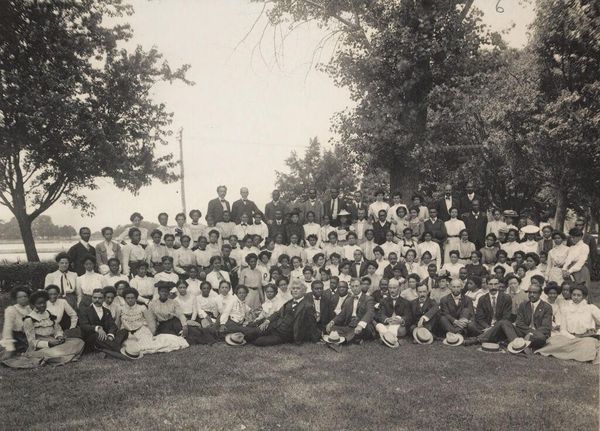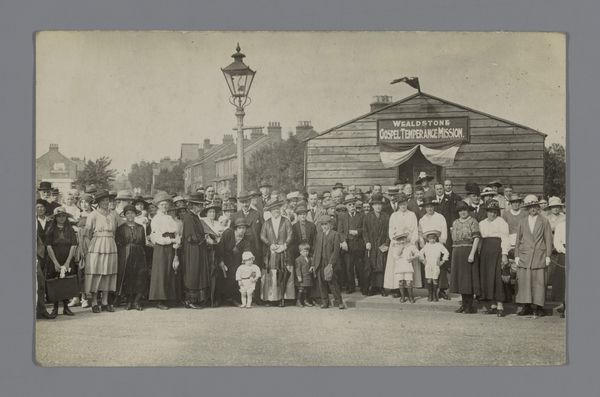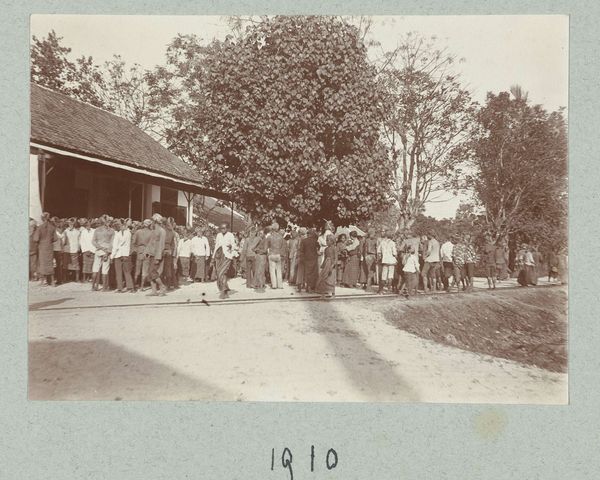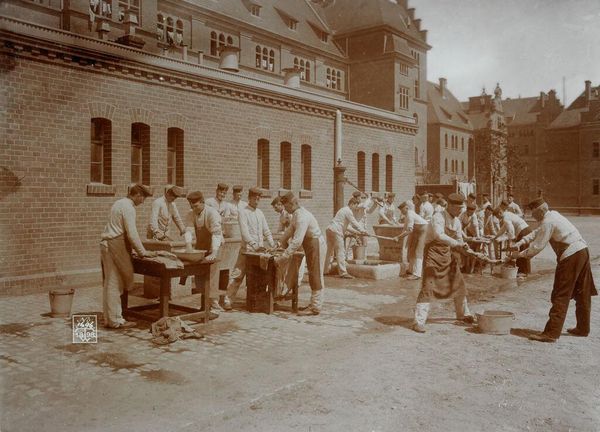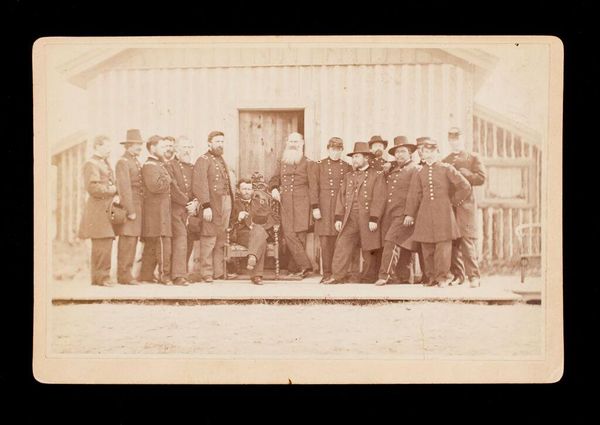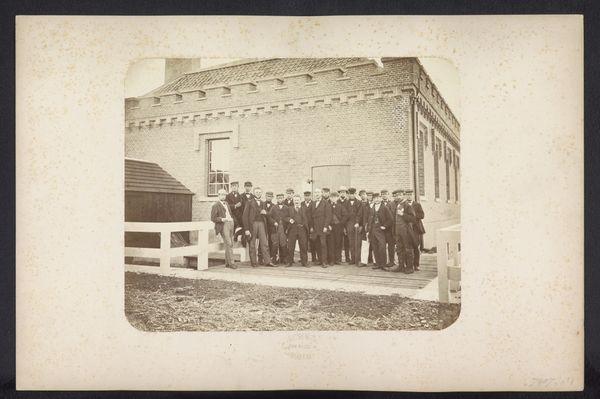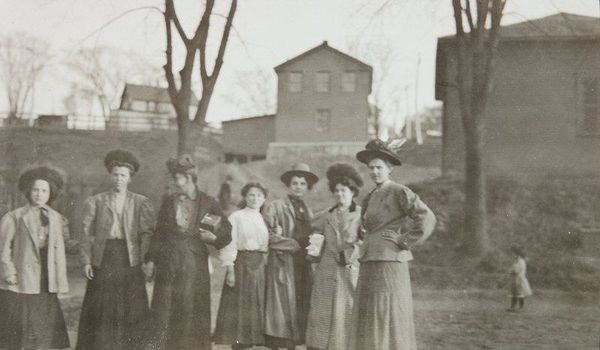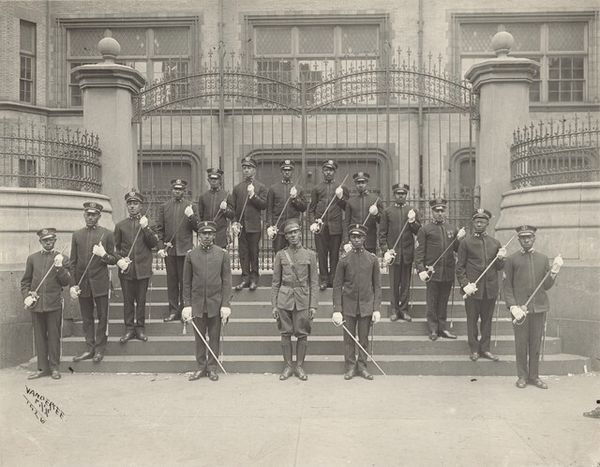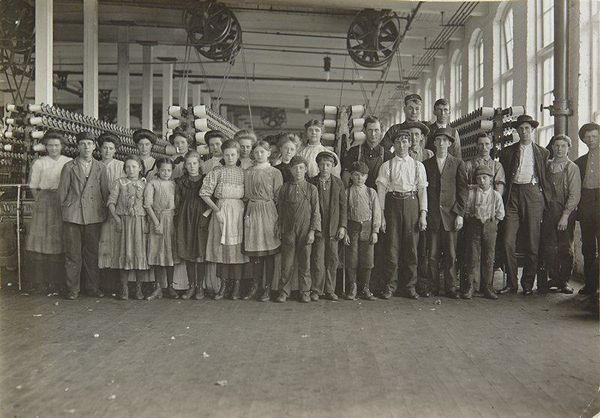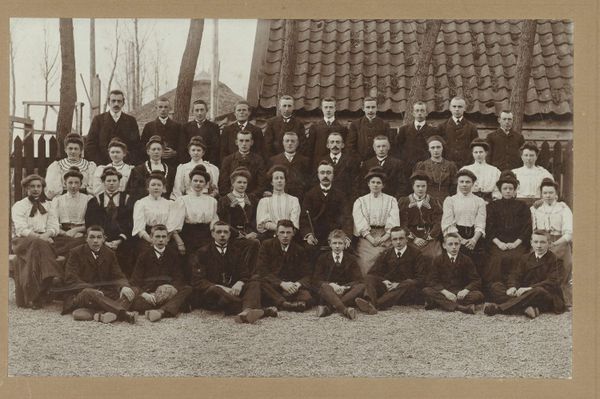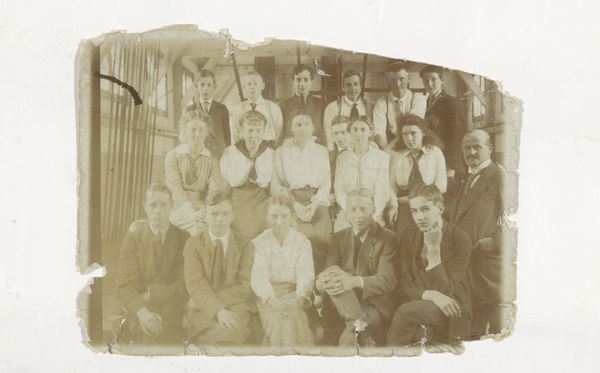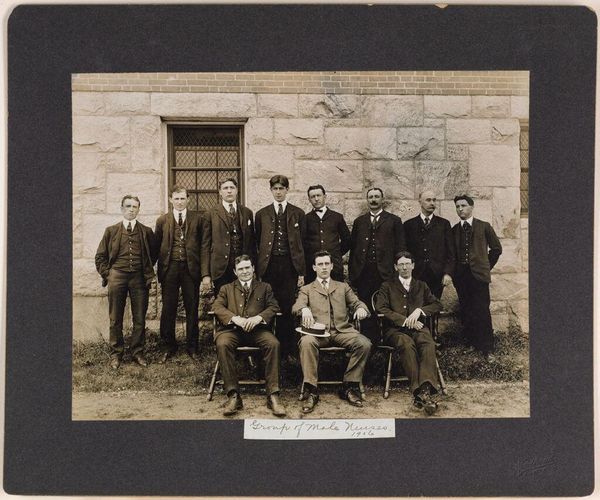
gelatin-silver-print, photography, gelatin-silver-print
#
portrait
#
gelatin-silver-print
#
social-realism
#
photography
#
group-portraits
#
gelatin-silver-print
#
ashcan-school
#
united-states
#
realism
Dimensions: 4 5/8 x 6 9/16 in. (11.75 x 16.67 cm) (image, sheet)
Copyright: No Copyright - United States
Curator: Lewis Hine captured this unnamed photograph in 1909. It's a gelatin silver print currently held in the collection of the Minneapolis Institute of Art. My first impression is one of a striking balance, though imbued with a certain sobriety. The arrangement of the figures creates a clear visual hierarchy. Editor: Yes, there’s an undeniable gravity. Considering the photographic process involved at the time, I wonder how staged this image might be. Given Hine’s well known practice of photographing child labor, I cannot look past the grave situation being represented in what we might deem merely a ‘portrait’. Curator: Indeed, Hine was associated with the Ashcan School and deeply committed to social realism. This work isn’t just formally compelling, it's charged with an agenda, wouldn’t you say? There is a definite asymmetry too; note how the texture and density of the brick facade contrasts against the building with the white clapboard. Editor: Precisely. He's deliberately placing the workers against the imposing structure of, I presume, the factory they work for. And while you focus on the architecture, consider how this plays into contemporary discussions around industrialism and class disparities at the time. Photography like this could act as visual evidence. It documents lives lived under specific historical constraints. Curator: It’s a powerful convergence of medium and message. But even detaching ourselves for a moment, consider the variations in tone he achieves using just silver gelatin printing! The nuanced gray scales and textures. It creates a haunting aesthetic on top of everything. The lighting on the faces gives each individual their own space. Editor: Absolutely, and without the cultural context, what does the work even become? In my eyes, without knowing Hine and without seeing these photographs circulating, calling attention, then it's just lines and tone as you put it. In effect, you need people and a public forum, not only for the photograph's value but it’s ultimate creation. Curator: Fair point, the social function enhances its aesthetic dimensions, undoubtedly. It seems the success lies in both the artistic choices and its subsequent circulation into a social sphere that actually changed the landscape it was representing. Editor: I agree, the historical awareness we bring enriches our aesthetic appreciation, bringing forward the issues that are visible on the image's surface, its tonal arrangement, but also its meaning and importance in 1909, and today.
Comments
No comments
Be the first to comment and join the conversation on the ultimate creative platform.
